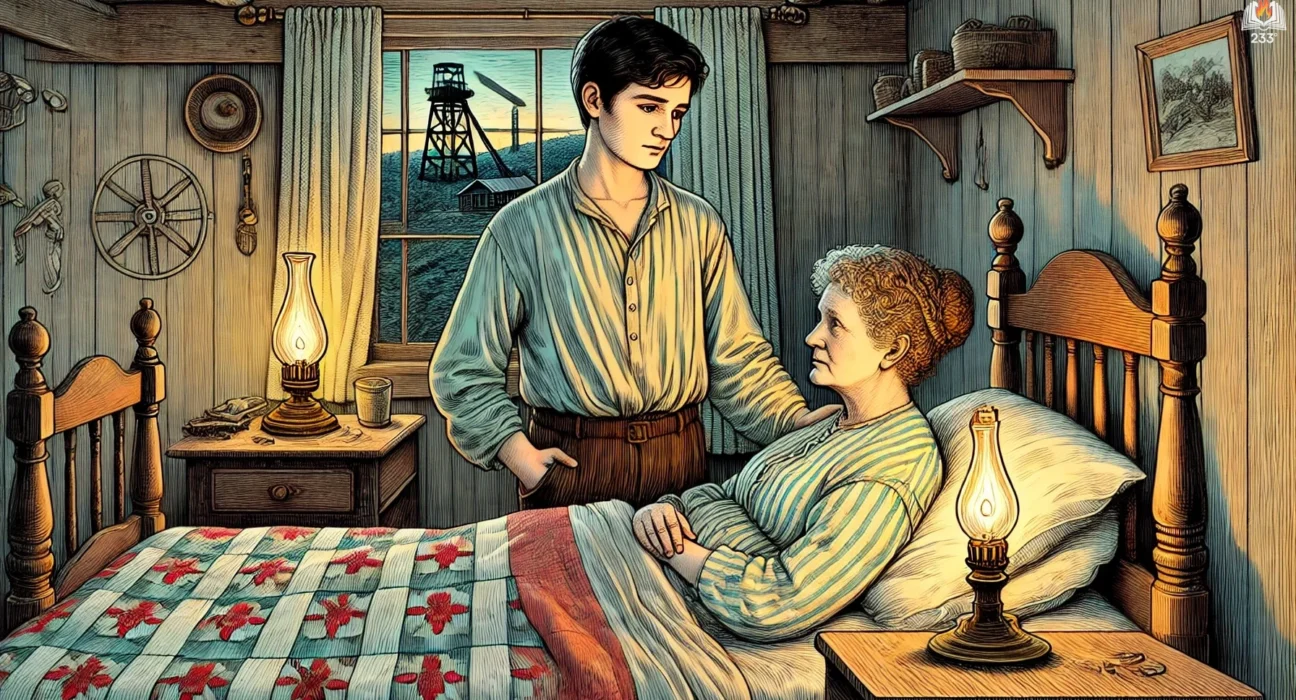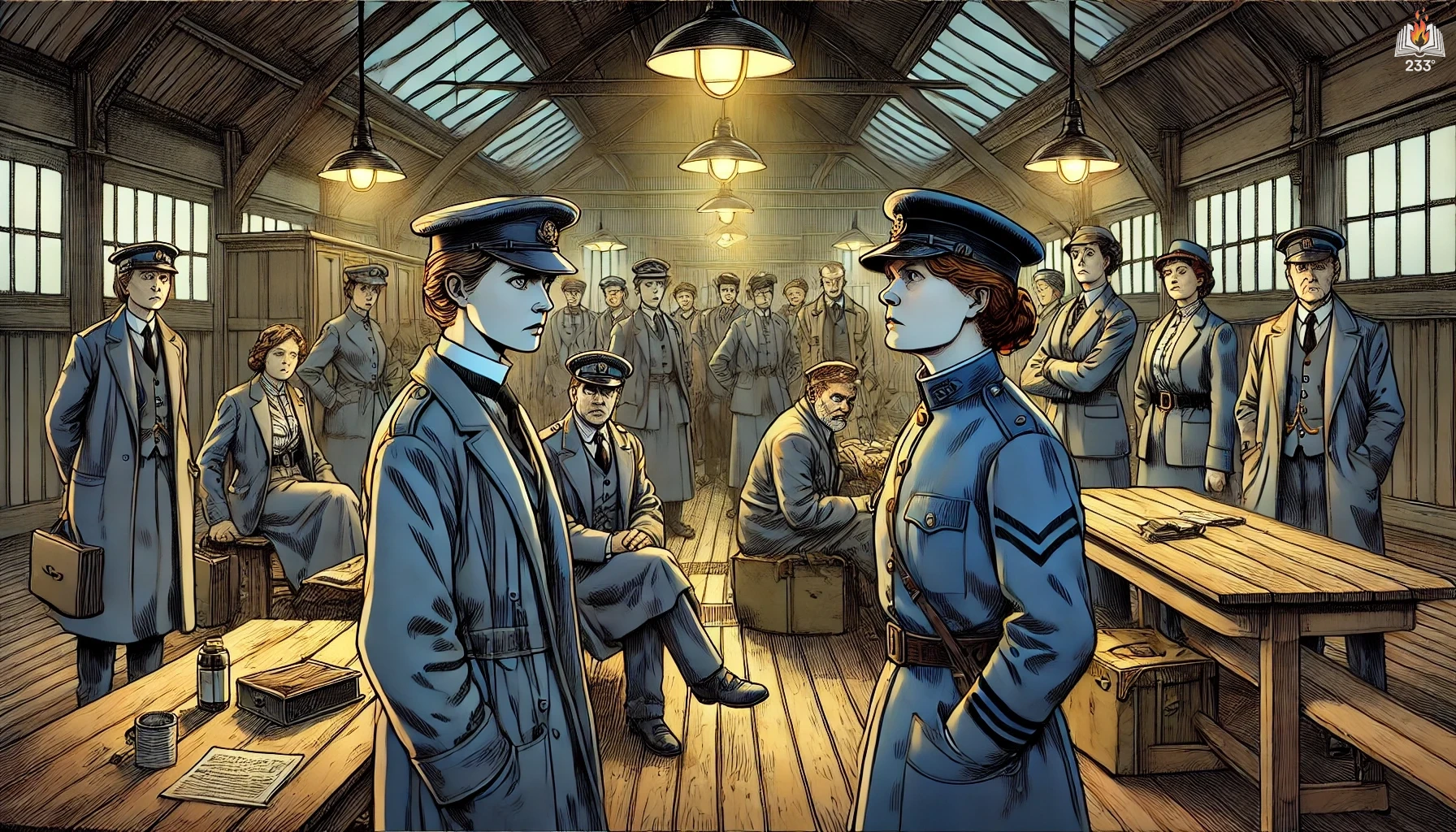“Sons and Lovers,” written by D. H. Lawrence and published in 1913, delves into the complexities of human relationships, focusing on a working-class family in early 20th-century England. It captures the emotional dynamics within the Morel family, centering on the bond between a mother and her sons and the conflicts that arise from it.
Plot Summary
The Morel family lives in the mining village of Bestwood, England. Gertrude Morel, an intelligent and high-minded woman, marries Walter Morel, a miner with a zest for life. Initially, she is charmed by his vitality and humor, but the realities of married life soon reveal his faults. Walter’s coarse manners, heavy drinking, and lack of ambition strain their relationship. As the years pass, their love dwindles into bitterness and resentment, leaving Mrs. Morel isolated and yearning for a deeper connection that her husband cannot provide. In this emotional void, she turns to her children, pouring her love and aspirations into them.
Mrs. Morel’s affection first centers on her eldest son, William. He is a bright and handsome boy, full of promise and ambition. She watches him grow with pride and hope, believing he will escape the grim life of the mining village. William moves to London, and his career blossoms, but he falls into a superficial relationship with a woman named Lily. Mrs. Morel disapproves of Lily, feeling she is unworthy of her son. The conflict strains William, who is torn between his mother’s expectations and his own choices. Tragically, he falls ill and dies, leaving Mrs. Morel devastated. The loss of William is a profound blow, and her grief is compounded by a sense of betrayal, as she had pinned all her dreams on him.
In the wake of William’s death, Mrs. Morel transfers her emotional investment to her second son, Paul. Sensitive, artistic, and introspective, Paul becomes the center of her world. He shares an intense bond with his mother, who shapes his worldview and ambitions. Under her influence, Paul aspires to rise above his working-class roots, seeking meaning and fulfillment through art and love. As he grows older, he finds himself entangled in complex relationships that mirror the emotional intensity of his connection with his mother.
Paul’s first significant relationship is with Miriam Leivers, a thoughtful and spiritual girl who shares his love for art and literature. Their connection is deep and intellectual, but it is fraught with difficulty. Miriam’s love for Paul is almost worshipful, demanding a level of emotional commitment that overwhelms him. Paul is both drawn to and repelled by her intensity, sensing a kind of spiritual suffocation in her love. Mrs. Morel, sensing a threat to her bond with Paul, disapproves of Miriam. She views her as too serious and otherworldly, fearing that Miriam’s influence will take Paul away from her. Paul, caught between the two women, struggles with his feelings. He loves Miriam in his way but is unable to commit fully, burdened by an unspoken allegiance to his mother.
Paul and Miriam’s relationship becomes a painful cycle of longing and rejection. They draw close, only for Paul to pull away, haunted by his inability to break free from his mother’s influence. Their love remains unfulfilled, a source of anguish for both. In his attempt to escape this emotional entanglement, Paul turns to another woman, Clara Dawes, seeking a different kind of connection.
Clara is everything Miriam is not: sensual, passionate, and worldly. She is separated from her husband, Baxter Dawes, and carries an air of defiance and independence that intrigues Paul. Their relationship is physical and intense, offering Paul a kind of freedom he has not known with Miriam. Yet, even in this relationship, Paul is not truly free. He is still tethered to his mother, and Clara becomes aware that she is competing with an unbreakable bond. While Paul and Clara share moments of passion, there is an underlying sense of incompleteness. Paul cannot fully give himself to Clara because he has not yet freed himself from his mother’s grasp.
As Mrs. Morel’s health declines, Paul becomes more entwined in a web of duty and guilt. His mother’s influence weighs heavily on him, and he is torn between his need to care for her and his desire to forge his path. Mrs. Morel’s illness is slow and painful, and Paul watches helplessly as the woman who has been the center of his life fades away. He nurses her with a mix of devotion and resentment, knowing that her hold over him will end only with her death.
In her final days, Mrs. Morel clings to Paul, her last remaining connection to life. She fears for his future, knowing how deeply he has been affected by their relationship. Paul, in turn, is consumed by a mix of grief and liberation. He loves his mother deeply, yet he longs to be free of her shadow. When she dies, Paul is left in a state of existential despair, feeling both lost and released. He contemplates ending his life, unable to imagine a future without her.
However, in the aftermath of her death, Paul confronts his inner turmoil. He stands at a crossroads, faced with the choice of succumbing to despair or embracing life anew. In a moment of clarity, he decides to live, to seek his destiny beyond the confines of his mother’s influence. It is a resolution born of pain and the desire to find himself in a world that now seems vast and uncertain. The path ahead is unclear, but for the first time, Paul faces it alone, ready to shape his own fate.
Main Characters
- Mrs. Gertrude Morel: A strong-willed, intellectual woman who becomes disillusioned with her marriage and channels her emotional energy into her sons. Her intense love for them, especially Paul, becomes both nurturing and stifling.
- Walter Morel: A miner and Mrs. Morel’s husband, whose initial charm gives way to a coarse and irresponsible nature, leading to a troubled marriage.
- Paul Morel: The protagonist, a sensitive and artistic young man torn between his loyalty to his mother and his desire for independence. His relationships with women are deeply affected by his mother’s influence.
- William Morel: Paul’s elder brother, whose early success and tragic death leave a profound impact on the family.
- Miriam Leivers: A deeply spiritual and intellectual girl who shares a complicated and unfulfilled relationship with Paul.
- Clara Dawes: A passionate and sensuous woman who represents a more physical and less emotionally intense connection for Paul.
Theme
- Oedipal Complex: The novel explores the intense bond between Paul and his mother, hinting at an Oedipal dynamic that affects his ability to form romantic relationships with other women.
- Industrialization and Class Struggle: The harsh realities of working-class life and the impact of industrialization are depicted through the Morel family’s struggles.
- Conflicting Desires: Paul’s internal conflict between his loyalty to his mother and his need for independence reflects the struggle between familial duty and personal desire.
- The Power of Influence: The novel examines how Mrs. Morel’s powerful influence shapes and, in some ways, stifles her sons’ emotional development.
Writing Style and Tone
D. H. Lawrence’s writing style in “Sons and Lovers” is characterized by its deep psychological insight and vivid descriptions. He delves into the inner lives of his characters, revealing their emotional complexities and conflicts with an almost poetic sensitivity. The tone is introspective and often melancholic, reflecting the characters’ struggles and the oppressive atmosphere of the mining village. Lawrence employs rich, evocative language to depict the natural environment, mirroring the characters’ inner states and emphasizing the themes of desire, repression, and the quest for self-identity.
We hope this summary has sparked your interest and would appreciate you following Celsius 233 on social media:
There’s a treasure trove of other fascinating book summaries waiting for you. Check out our collection of stories that inspire, thrill, and provoke thought, just like this one by checking out the Book Shelf or the Library
Remember, while our summaries capture the essence, they can never replace the full experience of reading the book. If this summary intrigued you, consider diving into the complete story – buy the book and immerse yourself in the author’s original work.
If you want to request a book summary, click here.
When Saurabh is not working/watching football/reading books/traveling, you can reach him via Twitter/X, LinkedIn, or Threads
Restart reading!








